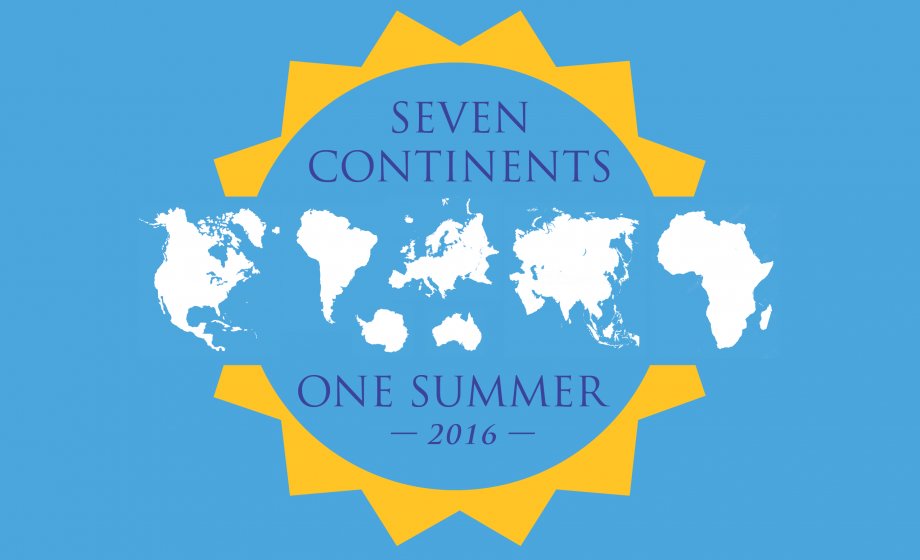7 Continents, 1 Summer

At the school’s 112th Commencement two Sundays ago, Clark University said farewell to more than 1,000 undergraduate and graduate students who took their diplomas and futures in their hands after years of hard work. We also said, “See you in the fall” to thousands more students who are still toiling away on their formal educations.
With all these departures, it’s tempting to look around this quiet campus and imagine that the learning and hard work have stopped; that the students will spend their summers on beaches near and far, and faculty will focus on other pursuits. But to do so misses the point of Clark entirely. While our classrooms are mostly silent, the Clark community is still incredibly vibrant — and making a difference this summer in all corners of the world.
To share some of the many things that Clarkies are doing in the next three months, we’ve created a story series we’ve dubbed “7 Continents, 1 Summer.” Each week for the next 12 weeks we’ll bring you the stories of current undergraduate and graduate students, alumni and faculty who will be busy working on every continent.
Among the people you’ll meet:
- An undergraduate who’s taking a trip on the Trans-Siberian Railroad, reading seminal Russian literature and sharing his reflections and photos.
- A faculty member’s four-continent scientific study that will help scientists better understand the biology of shitake mushrooms.
- A doctoral student’s use of high-resolution satellite imagery provided by the DigitalGlobe Foundation to study deforestation in her native Rwanda.
- An alum who is the president of a university in Kenya.
- An undergrad studying the impact of the Mongolian mining industry’s water usage on the environment and nomadic herders.
- A faculty member sharing Clark’s LEEP undergraduate educational model with a university in Vietnam.
Today we get started with a story on Clark’s long history in Antarctica. For almost a century Clark faculty and students have visited and studied the most remote continent on the planet. Their work has led to a mountain range being named for Clark professors, the genesis of the concept of the wind chill factor and deep study (literally and figuratively) of Antarctica’s role as the canary in the climate change coal mine.
Read the story now, and stop by ResearchMatters and ClarkNow every week through the end of August to read the latest installment. If you want to share something you’ve read, use the hashtag #7Continents1Summer. And if you’re a Clarkie doing something exciting around the globe this summer, let us know and we’ll be in touch.
